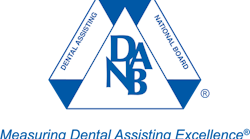Dental assisting is an exciting and fast-growing career. Dental assistants who plan to move to a new state may find that there are many jobs available to them. According to the US Bureau of Labor Statistics, there is expected to be a 19% increase in the number of dental assisting jobs between 2016 and 2026.
But even if there are many jobs available, being eligible to work as a dental assisting in a new state may take some planning. In most states, there are no requirements to work as an entry-level dental assistant. However, many states do have requirements that dental assistants must meet to perform dental radiographic procedures or expanded functions.
The type of title you have as a dental assistant in a new state might be different than what you had in your previous state. Believe it or not, there are over 40 different job titles for dental assistants across the country. Your job title, education and exam requirements, and even what functions you’re allowed to perform can change depending on the state where you work.
How can I check my state’s requirements?
Dental assisting requirements, job titles, and allowable functions vary from state to state. While some states have only one level of dental assistant, other states have up to five different levels and job titles. Visit the Dental Assisting Board (DANB)’s Search-by-State Map to look up the requirements in each state.
DANB recently published the latest updates to the state requirements for 2019, so now is a good time to check out this resource. Even if you are not planning on moving, if your goal is to take on more duties in your current state, DANB’s Search-by-State Map can help you find out what you need to do to get to the next level.
Each state webpage lists the exam, education, and training requirements by job title, as well as a link to that state’s dental board. You can download and print a chart with these requirements, which includes allowable and prohibited duties.
Additionally, DANB offers a state dental practice acts database, which has each state’s statutes, regulations, and administrative rules governing the practice of every member of the dental team. DANB created the database in collaboration with the American Association of Dental Boards, so anyone can easily locate the full dental practice act and dental board’s administrative rules and regulations for all dental team members in any state.
The DALE Foundation, the official DANB affiliate, offers an online CDE Requirements by State map, which outlines the continuing education requirements for dental assistants at various levels in each state. Some states also recognize DALE Foundation courses as meeting either initial or continuing education requirements. You can find out what is recognized in your state by visiting the search-by-state map.
What if I don’t want to start over in a new state?
One of the biggest challenges as a dental assistant is moving. Since each state is different, you may find yourself not being able to work at the same level without more exams, education, or training. Although there is no hard-and-fast rule, there are a couple things you can do to make it easier to relocate.
Attend a CODA-accredited program. If you can, attending a Commission on Dental Accreditation (CODA)-accredited dental assisting program is a good idea since many states recognize or require these programs.
Earn DANB certification. DANB exams and certifications are recognized or required by 38 states, the District of Columbia, the US Air Force and the Department of Veterans Affairs. Holding DANB certification can make it easier for you to meet dental assisting requirements if you ever move and need to find work in a new state.
“When I earned CDA certification, I was six weeks away from moving to another state. When I was looking for jobs, it made a difference,” says Maryann M., CDA.
Clyde B., CDA, was grateful for DANB certification while relocating. “When I moved, my state recognized DANB’s CDA certification so I didn’t have to start over,” Clyde recalls.
To learn more about how DANB certification can benefit you, visit danb.org.






